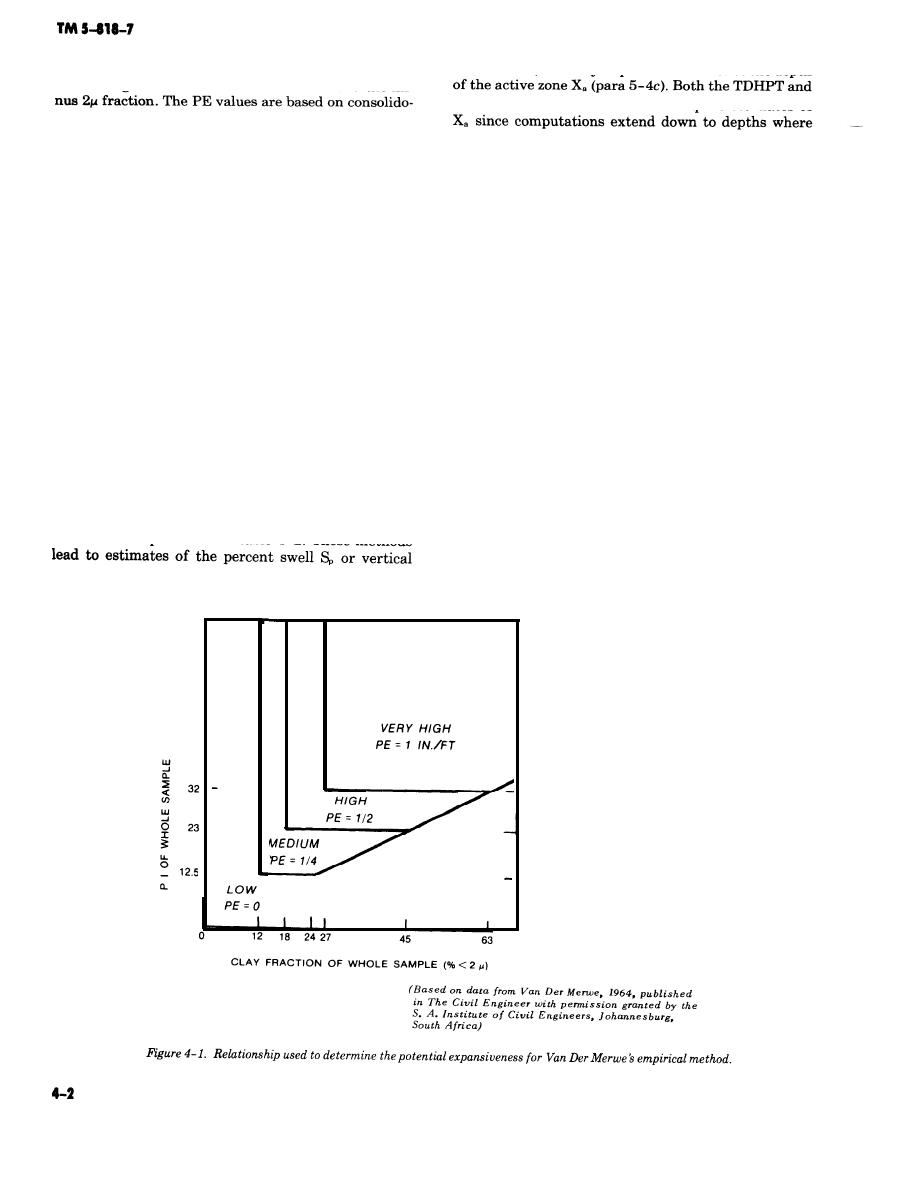
levels, respectively, of potential expansiveness, de-
cal direction, and they require an estimate of the depth
fined in figure 4-1 as functions of the PI and the mi-
Van Der Merwe methods do not require estimates of
meter swell test results and field observations. This
method does not consider variations in initial moisture
the computed heaves become negligible. The Van Der
conditions.
Merwe, McKeen-Lytton, and Johnson methods tend to
give maximum values or may overestimate heave,
d. Physiochemical tests. These tests include iden-
whereas the remaining methods tend to give minimum
tification of the clay minerals, such as montmorillo-
values or may underestimate heave when compared
nite, illite, attapulgite, and kaolinite, with kaolinite
with the results of field observations at three WES
being relatively nonexpansive, cation exchange capac-
test sections.
ity (CEC), and dissolved salts in the pore water. The
f. Application. These identification tests along with
CEC is a measure of the property of a clay mineral to
the surface examination of paragraph 3-2 can indicate
exchange ions for other anions or cations by treatment
problem soils that should be tested further and can
in an aqueous solution. The relatively expansive mont-
provide a helpful first estimate of the expected in situ
morillonite minerals tend to have large CEC exceeding
heave.
80 milliequivalents per 100 grams of clay, whereas the
(1) More than one identification test should be
CEC of nonexpansive kaolinite is usually less than 15
used to provide rough estimates of the potential heave
milliequivalents. The presence of dissolved salts in the
because limits of applicability of these tests are not
pore water produces an osmotic component of soil suc-
known. In general, estimates of potential heave at the
tion that can influence soil heave if the concentration
ground surface of more than 1/2 inch may require fur-
of dissolved salts is altered. In most cases, the osmotic
ther laboratory tests, particularly if local experience
suction will remain constant and not normally influ-
suggests swelling soil problems. Soil strata in which
ence heave unless, for example, significant leaching of
the degree of expansion is medium or high should also
the soil occurs.
be considered for further swell tests (para 2-2c).
e. Other methods. Other methods that have been
(2) The McKeen-Lytton method of table 4-2 has
successful are presented in table 4-2. These methods
been applied to the prediction of potential differential
heave for average changes in moisture conditions by
heave assuming that all swell is confined to the verti-
the Post-Tensioning Institute (PTI) for design and con-


 Previous Page
Previous Page
